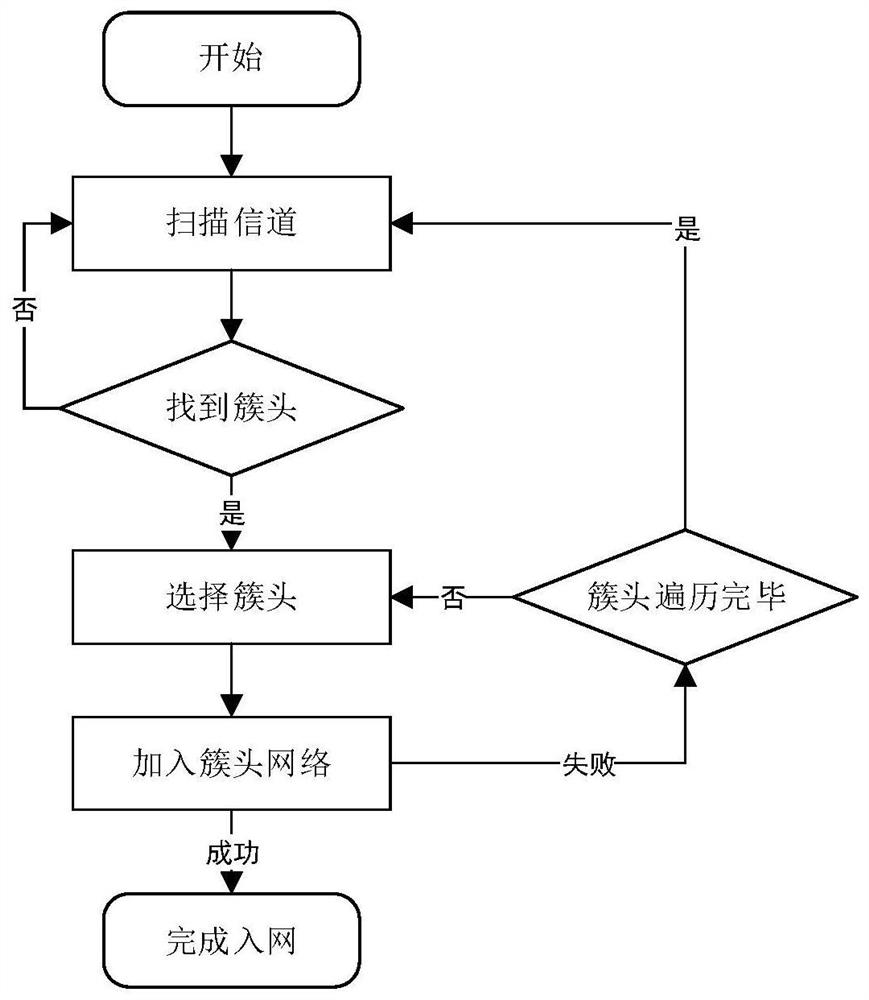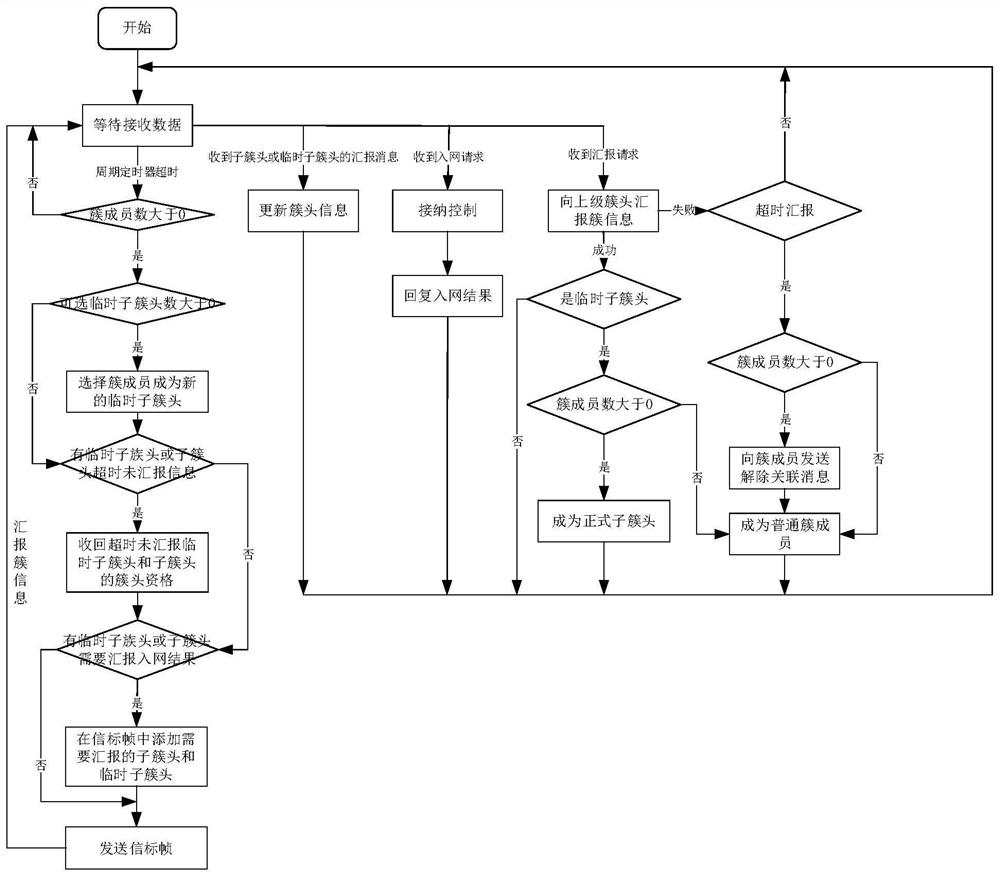Cluster head selection method for large-scale self-organizing wireless communication cluster network generation
A wireless communication and self-organization technology, applied in the field of ad hoc networks, can solve the problems of large time overhead and networking delay, and achieve the effects of improving networking speed and success rate, not easy network congestion, and reducing communication overhead.
- Summary
- Abstract
- Description
- Claims
- Application Information
AI Technical Summary
Problems solved by technology
Method used
Image
Examples
Embodiment 1
[0079] Such as image 3 , Figure 4 shown.
[0080] A cluster head selection method for generating a large-scale self-organizing wireless communication cluster network, comprising the following steps:
[0081] Step B1: During the networking process, the upper-level cluster head divides the cluster members into k categories according to the communication quality between the cluster members and them: L 1 ,...,L i-1 , L i , L i+1 ,...,L k , and count the number of cluster members of each type: n 1 ,n 2 ,...,n k ;
[0082] Step B2: The superior cluster head assigns a selection weight to each type of cluster member: w 1 ,...,w i-1 ,w i ,w i+1 ,...,w k ;
[0083] Step B3: If a new temporary sub-cluster head can be selected from the current cluster members, calculate the probability of each type of cluster member being selected as a temporary sub-cluster head according to the selection weight of each type of cluster member and the number of each type of cluster members...
Embodiment 2
[0101] The above-mentioned embodiment 1 is applied to the method for generating a cluster network of a large-scale self-organizing wireless communication network, which is specifically applied to the following step B.
[0102] Such as figure 1 , figure 2 , image 3 As shown, the generation cluster networking method of a large-scale self-organizing wireless communication network includes the following steps:
[0103] Step A: The formal cluster head forms a formal cluster through broadcast beacon frame networking, and then go to step B;
[0104] Step B: Select a cluster member from the official cluster that meets the conditions of the temporary sub-cluster head as the temporary sub-cluster head, and go to step C;
[0105] Step C: Networking of temporary sub-cluster heads broadcasting beacon frames to form a temporary cluster, then go to step D and step E;
[0106] Step D: If the temporary sub-cluster head fails to report cluster information to the official cluster head with...
Embodiment 3
[0118] Such as figure 2 Shown, on the basis of embodiment 2,
[0119] Preferably, in step D, when the number of cluster members in the temporary cluster is greater than 0, the temporary sub-cluster head is reset as a cluster member, and the temporary sub-cluster head sends a message leaving the network to the cluster members in its temporary cluster, and the temporary cluster is removed Disband; when the number of cluster members in the temporary cluster is equal to 0, directly reset the temporary sub-cluster head as a cluster member.
[0120] Preferably, in step E1, after the temporary sub-cluster head becomes an official sub-cluster head, the temporary cluster becomes an official cluster, and the new official cluster head selects its cluster members as temporary sub-cluster heads to continue expanding the next level of sub-clusters.
[0121] Preferably, the cluster information is encapsulated in a report message, and the cluster head sends a report request to the official ...
PUM
 Login to View More
Login to View More Abstract
Description
Claims
Application Information
 Login to View More
Login to View More - R&D
- Intellectual Property
- Life Sciences
- Materials
- Tech Scout
- Unparalleled Data Quality
- Higher Quality Content
- 60% Fewer Hallucinations
Browse by: Latest US Patents, China's latest patents, Technical Efficacy Thesaurus, Application Domain, Technology Topic, Popular Technical Reports.
© 2025 PatSnap. All rights reserved.Legal|Privacy policy|Modern Slavery Act Transparency Statement|Sitemap|About US| Contact US: help@patsnap.com



